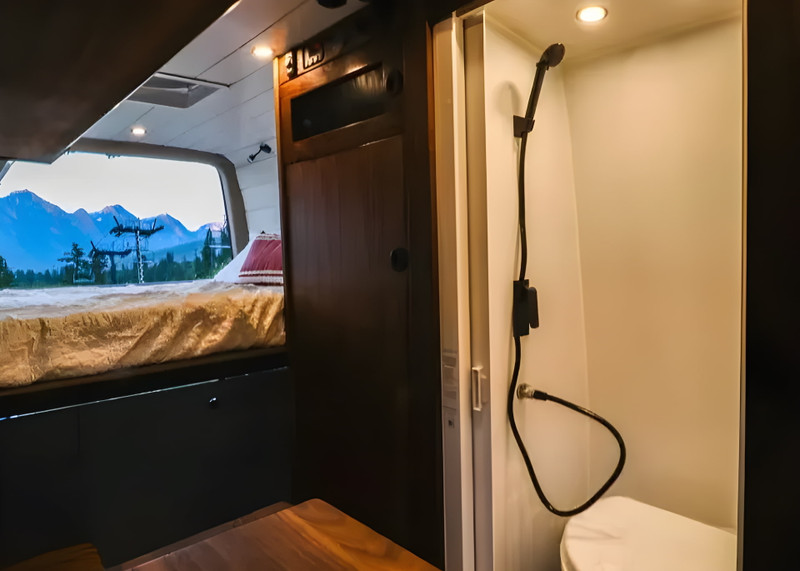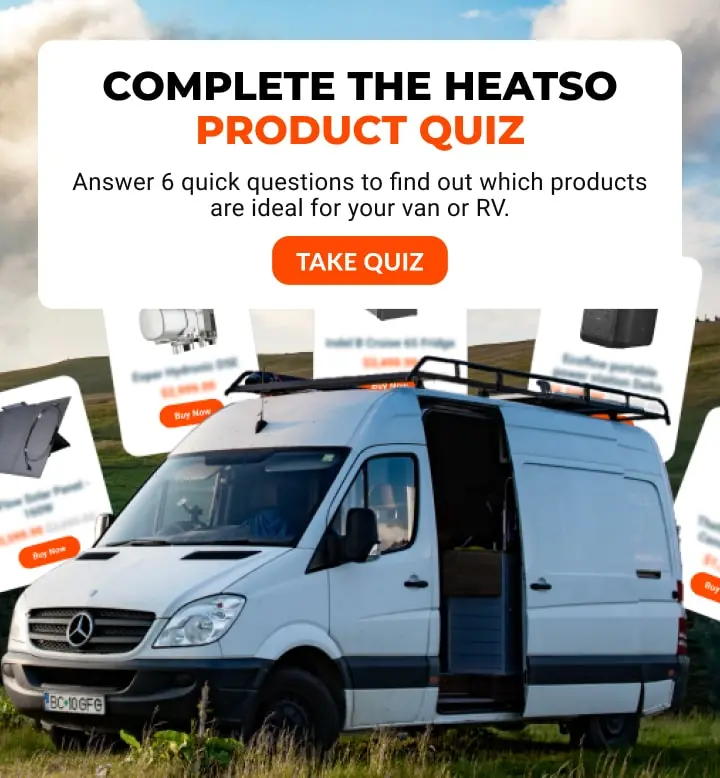3 Easy Ways to Get Hot Water in a Van/RV
Posted by Heatso on 31st Aug 2022
Camping in RVs is typically associated with warm weather and summer activities. However, you can use your RV during cold weather, too. It's just a matter of making sure you and your RV are well prepared for the challenges of cold weather camping. Staying warm will be your highest priority at all times. With this blog post, we'll discuss the most important things you need to remember when camping in the winter.
3 EASY WAYS TO GET
HOT WATER IN AN RV / VAN
3 EASY WAYS TO GET
HOT WATER IN AN RV / VAN
If you’re traveling in a van or RV, you know that staying warm is essential. Having an on-demand supply of hot water can be a game-changer, providing a level of comfort any home should have. After all, taking a cold shower in the middle of winter doesn’t sound very appealing!
Thankfully, there are many ways how you can get a reliable supply of hot water to your off-grid home. We’ll talk about rv diesel water heaters, combined heaters, and calorifiers, and look at the strengths and weaknesses of every one of these three popular options.
DECIDING ON HOW MUCH YOU NEED
How much water you use will determine what kind of heater is best for you. Some heaters heat the water inside a tank, while others heat it as it flows through. In any case, in a motorhome, you have a finite supply of water. Keep in mind that water heaters can vary widely in their capacity, but in general, diesel heaters tend to be the most energy and fuel-efficient.
Here are some estimates of how much water common activities take up. Depending on your water pressure, taking a nice hot shower requires around 1 gal. (4L) per minute. Doing a basket of laundry by hand uses as much as 3 gal. (9L), whereas washing the dishes uses only about 0.5-1.5 gal. (2-5L).
DIESEL WATER HEATERS
The two main types of diesel hot water heaters for a van are tankless or with a water tank. When choosing a water heater, consider your personal needs. How will you use hot water? How much water will each daily task consume, and how regularly can you fill up on fuel or water?
Tankless water heaters are primarily fueled by LPG (Liquified Petroleum Gas) or propane. As cold water passes over a heat exchanger, it is almost instantly heated and then dispensed at the correct temperature. These are often mounted on the back door to create a convenient outside shower.
Tank heaters usually come in a kit that includes everything you need for installation: plumbing, water pumps, an expansion tank, an exhaust system, wiring, and a controller. The tank acts as a holder for the water while it is heated up and then dispensed, usually fed from an adjoining cold tank.
Diesel water heaters like the Espar Hydronic S3 D5E are the most common type of heater that requires a tank. On the other hand, calorifiers and combined heaters have their own integrated tanks.
COMBINED WATER HEATERS
Combined water heaters have the added advantage of also warming up the air in your cabin. RV Diesel water heaters like the Webasto Dual Top ST 6 function very similarly to a tank heater, but have an integrated water tank.
They work just like a miniature version of your van’s engine: fuel is pumped into the unit and mixed with air via an intake to create combustion. This warms up the internal heat exchanger over which liquid is passed to heat it. The liquid is run through a coil that circulates between the heater and the internal hot water tank.
In the case of combined water heaters, hot air is also passed over the heat exchanger. So while it heats up your fresh water, warmed air is also distributed in the cabin through two hot air outlets.
These water heaters are the best choice for larger off-grid homes like class A or class C motorhomes. They’re significantly more energy and fuel-efficient, and take up much less space than the alternative two heaters that would provide the same heating capabilities.
CALORIFIERS
Calorifiers are a great option for creating hot water in your camper van as they use waste heat from your engine and require no additional resources. Most commonly used on boats, they’re also perfectly suitable for RVs and van conversions.
They work by connecting to your engine’s coolant recirculation system. Here, the heated coolant will circulate in the coils inside the calorifier’s insulated tank and heat up the water. The only downside is they are a little bulky to store, but the upside is you’ll have instant hot water as soon as you park after a day of driving.
If you’re planning on spending long periods in one spot, you can connect a diesel hot water heater to your calorifier. This will give you a complete hot water system – you’ll have a way to generate and then store lots of hot water to use on-demand, anywhere you go.












